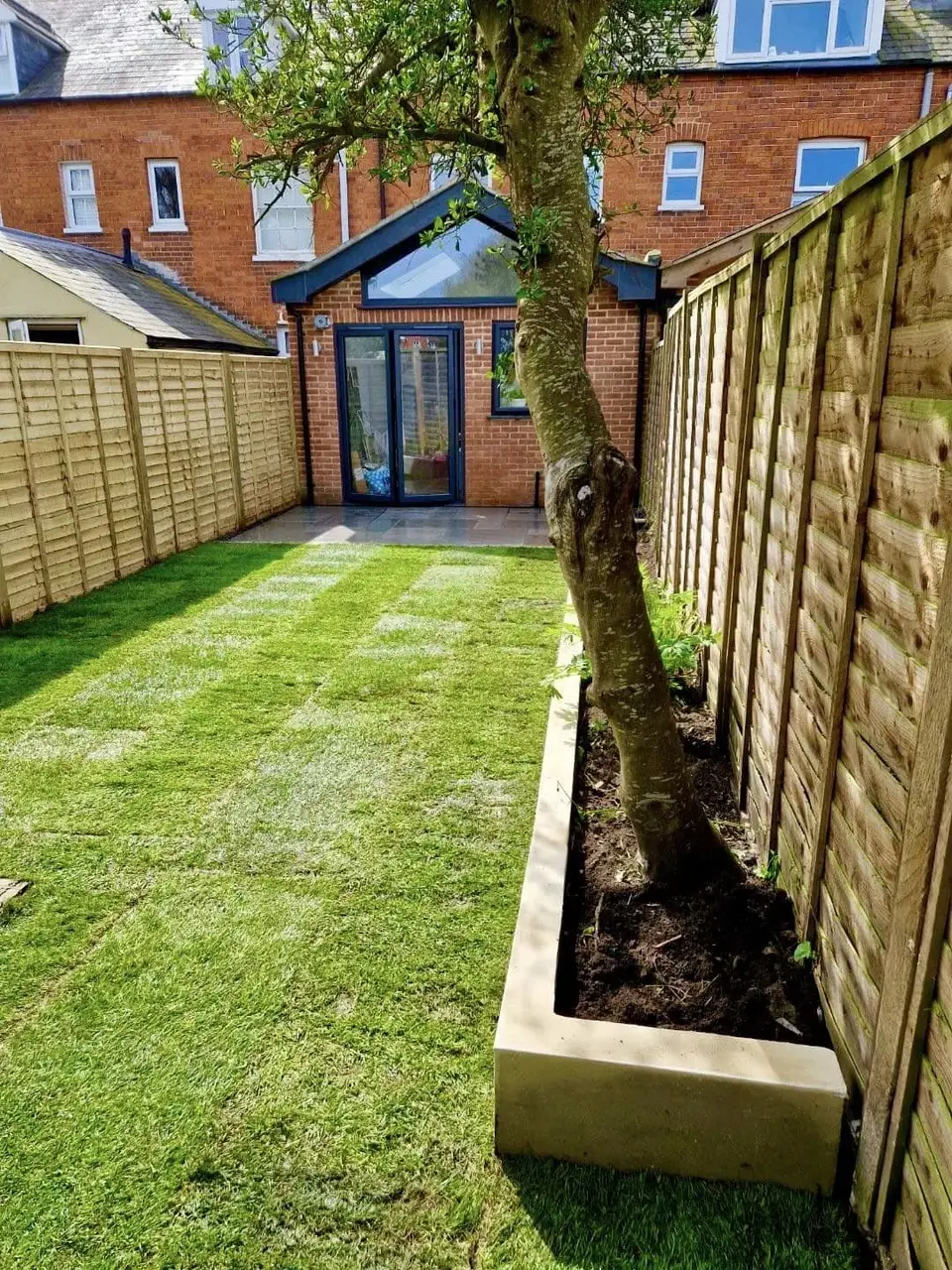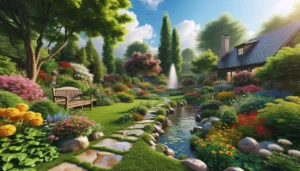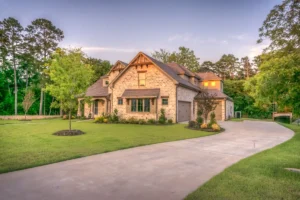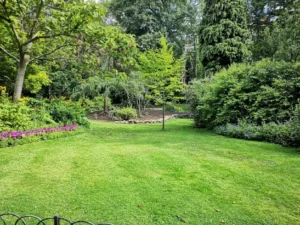Introduction to Landscape Installation
Landscape installation transforms your outdoor space into a beautiful, purposeful area. It’s not just about planting a few flowers or laying down sod. It’s about carefully planning and executing a design that suits your space, climate, and lifestyle.
Whether you want a cozy backyard haven or a sleek garden design, landscape installation is your first step. It involves choosing the right plants, materials, and features to create a harmonious outdoor environment. From soil preparation and plant selection to hardscaping and decorative features, each element plays a crucial role in the installation process. Remember, a successful landscape installation not only enhances the beauty of your property but also increases its value. So, if you’re looking to transform your outdoor area, understanding the basics of landscape installation is essential.

Planning Your Landscape Design
When you start thinking about a new look for your yard, planning your landscape installation design is the first big step. It’s not just about picking plants and putting them in the ground. A good plan takes into account the shape of your yard, what kind of soil you have, and how much sun and shade each area gets. Start by drawing a rough sketch of your yard, noting areas of full sun, partial shade, and full shade. This helps you decide where to plant. Also, think about what you want from your yard. Do you want a space for kids to play, a veggie garden, or maybe a cozy spot for relaxing? Knowing this helps you design a space that fits your lifestyle. Don’t rush it. A well-thought-out plan saves you time and money in the long run.
Choosing the Right Plants and Materials
Choosing the right plants and materials for your landscape is key. First thing, know your zone. Your local climate dictates what plants will thrive in your area. Next, think about the sunlight in your garden. Some plants love the sun; others need shade. Don’t mix them up.
Now, consider water needs. Group plants with similar thirst levels together to make watering efficient. Soil type matters too. Some plants need sandy soil; others prefer clay. Get to know your soil or be ready to amend it. Choose native plants when you can. They’re built for your climate, so they’re easier to care for and good for local wildlife. As for materials like mulch, rocks, or edging, go for durability and look. Your choices define your garden’s style and upkeep. Remember, the right plants and materials save time, money, and guarantee a thriving landscape.
Preparing the Site for Landscape Installation
Before you start installing your new landscape, preparing the site is crucial. This means getting the area ready for whatever plants, flowers, or structures you plan to add. First, you need to clear the site. Remove any weeds, rocks, or old plants that won’t be part of the new design. This step creates a clean slate for your new landscape installation.
Next, test the soil. Knowing your soil type helps in selecting the right plants and deciding if you need to adjust the soil with compost or fertilizers. Sometimes, you might need to improve drainage or change the soil’s pH level. After that, you should level the ground. Get rid of any bumps or holes to create a smooth, even surface. This is important for both planting and setting up features like patios or pathways. Last, plan out your irrigation. Think about how your plants will get water. Whether it’s through an existing system or a new one you’ll install, ensure it meets your garden’s needs. Preparing the site properly lays the foundation for a healthy, beautiful landscape.
Implementing Hardscape Features
When it comes to adding hardscape features in your landscape installation, think about elements like patios, pathways, and retaining walls. These solid additions do more than just look good; they add function and increase the usable space in your outdoor area. Patios give you a great place to relax and entertain, paths can guide movement through your garden, and walls can hold back soil or create defined spaces.
The cost for these features can vary widely based on materials, size, and complexity of the design. Simple pathways might be affordable for most, while elaborate stone patios could be a significant investment. Remember, though, hardscaping not only boosts property value but also enjoyment of your outdoor space.
Planning carefully and choosing the right features for your needs can make all the difference. If you’re considering professional help with any hardscape features, be sure to check out our extensive list of services that we offer here at MJF Landscapes
Planting Techniques for a Thriving Landscape
To kick-start your landscape, getting your hands dirty is just the beginning. The real magic lies in how you place those green buddies into the earth. Firstly, you don’t just randomly dig holes and drop plants in. There’s a method to the madness.
For trees and shrubs, dig a hole that’s twice as wide as the root ball but no deeper. Why? This gives roots room to spread without suffocating. Drop your plant in, ensuring it sits at the same depth it was in its pot or nursery. This prevents root neck rot. Backfill the hole gently, water thoroughly, and add a layer of mulch to keep moisture in and heat out, but keep the mulch away from the trunk to avoid rot.
For flowers and smaller plants, the drill’s similar but on a smaller scale. Space them as per their expected growth size, not how tiny they look now. You don’t want them fighting for space later. Dig a comfy hole, tease the roots a bit to encourage them to explore, and plant. Water well and keep the soil moist, not soaked, during their early days.
Remember, the right place matters as much as the right way. Sun-lovers go where they can bask, and shade-dwellers where they can hide. Match plants to their preferred spots, and you’ll see them thrive with less fuss.
That’s your planting 101. Simple techniques, but they make all the difference between a landscape that struggles and one that flourishes. Keep these tips in mind, and watch your garden grow into a vibrant, healthy haven.
Installing Irrigation Systems
When it comes to setting up your garden, installing an irrigation system is a smart move. It’s a way to make sure your plants get the water they need, without you having to spend every evening with a hose. But before you dive in, you should know a few things. First off, the cost can vary. It depends on the size of your garden, the type of system you choose, and if you’re doing it yourself or hiring a pro. Drip irrigation systems are popular for good reason. They drip water right at the base of your plants, so not a drop is wasted.
This method is not only water-efficient but can also save you money in the long run. If you’re thinking big and want your entire garden watered with minimal fuss, a sprinkler system could be your go-to. It covers large areas well, but it’s a bit thirstier on water. Thinking of installing it yourself? It’s doable, especially if you’re handy and have a smaller space. There are plenty of kits out there that can help. But, for extensive systems, you might want to call in a professional. It’ll cost more, but you’ll have peace of mind knowing everything’s set up perfectly. So, weigh your options, think about what your garden really needs, and choose wisely. Your plants will thank you for it.
Mulching and Soil Improvement
Mulching is your garden’s best friend—it locks in moisture, keeps weeds at bay, and adds a clean, finished look to your beds. It’s simple but effective. You can choose from organic options like wood chips or straw, which improve the soil as they break down, or go with inorganic ones like rubber or rocks, which don’t boost soil health but last longer. When it comes to improving soil, mixing in compost or manure can do wonders. It’s like giving your soil a vitamin boost—increasing its nutrient content, helping it hold onto water, and making it easier for plant roots to spread out. Remember, healthy soil equals healthy plants. So, don’t skip on these steps if you want a thriving garden.
Landscape Installation Lighting for Aesthetics and Security
Landscape lighting does more than just make your garden look pretty at night. It boosts your home’s aesthetics, making it stand out in your neighborhood, and it adds a layer of security. Lights can highlight your garden’s best features and create a welcoming ambiance. When it comes to security, well-lit areas deter trespassers and make it safe for you and your family to walk outside at night. Think about using a mix of floodlights for wide areas and spotlights for those special garden features. Installing motion sensors also adds to your safety since they light up whenever there’s movement. Remember, the goal is to blend beauty with practicality, making your home both appealing and secure.
Maintenance Tips for Your New Landscape Installation
Keeping your new landscape thriving does not have to be a daunting task. Here are some straightforward tips to maintain it. Water your plants regularly, especially during the hot season. Deep, infrequent watering is better than a little sprinkle every day because it encourages deep root growth. Over time, your plants will need less water as they adapt to their environment. Mulch is your friend. It not only keeps the soil moist by reducing evaporation but also suppresses weeds and adds a polished look to your garden.
Remember, too much mulch can suffocate your plants, so keep it around 2-3 inches thick. Don’t ignore weeds. Pull them out as soon as you see them, so they don’t steal nutrients and water from your plants. Regularly check your plants for signs of disease or pests. Catching problems early can save your garden. Finally, fertilize appropriately. Not all plants need the same amount or type of fertilizer. Do a little research or ask a local gardening store for advice on what’s best for your landscape. With these simple practices, your landscape can flourish, enhancing the beauty of your home.
Thinking of transforming your garden but don’t have the time? Consider hiring professionals for the job.
Here at MJF Landscapes, we pride ourselves on premium quality work, at competitive prices. Read what our past clients have to say.
Be sure to get in touch and see how we can turn your dream garden, into a reality!





